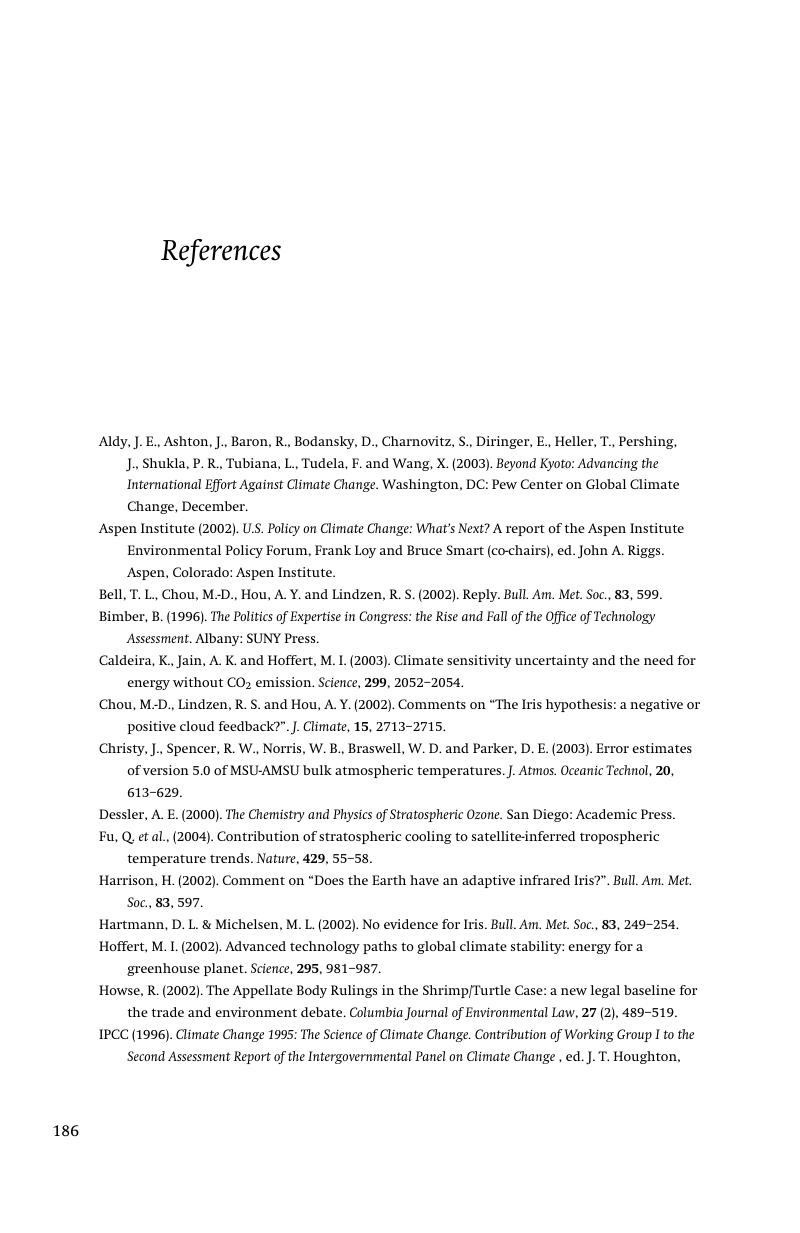Book contents
- Frontmatter
- Contents
- Preface
- 1 Global climate change: a new type of environmental problem
- 2 Science, politics, and science in politics
- 3 Climate change: present scientific knowledge and uncertainties
- 4 The climate-change policy debate: impacts and potential responses
- 5 The present impasse and steps forward
- Appendix
- Glossary
- References
- Index
- References
References
- Frontmatter
- Contents
- Preface
- 1 Global climate change: a new type of environmental problem
- 2 Science, politics, and science in politics
- 3 Climate change: present scientific knowledge and uncertainties
- 4 The climate-change policy debate: impacts and potential responses
- 5 The present impasse and steps forward
- Appendix
- Glossary
- References
- Index
- References
Summary

- Type
- Chapter
- Information
- The Science and Politics of Global Climate ChangeA Guide to the Debate, pp. 186 - 188Publisher: Cambridge University PressPrint publication year: 2005



